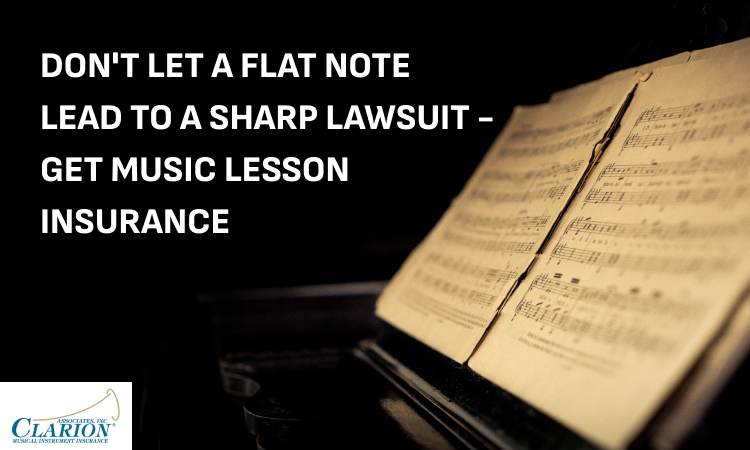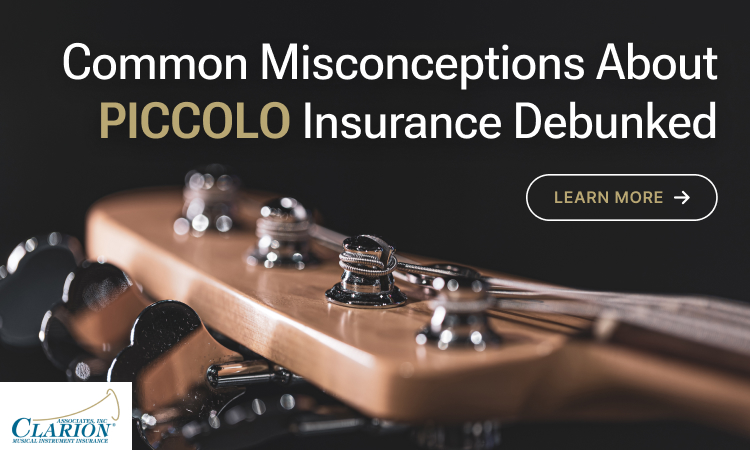The world of music is beautiful and enchanting. It is more of a symphony of tunes, beats, and the joy of nurturing a love for the arts in others. And, you, as a music teacher, share your expertise and passion with your students. You guide them to unlock their musical caliber. However, even in this lyrical setting, unforeseen circumstances can arise. Most importantly, it can change a perfect chord into a potential financial strain. So, how can you protect yourself from the uncertainties of life? This is where music insurance for lessons steps in. It acts as a protection barrier between your dreams and the unwanted. So, without further ado, let’s take a plunge!
Imagine a young student tripping on a music stand during a lesson, sustaining a minor injury. While seemingly a petty issue, the student’s parents might file a lawsuit against you, claiming negligence. Terrible! Right? However, such accidents do happen. Legal fees and potential settlements can quickly drain your savings. This instance, though hypothetical, emphasizes the critical importance of a dedicated music lesson insurance plan. It is more than just an escape from mental chaos. It is a financial arsenal against unforeseen circumstances.
The cornerstone of such insurance products is general liability coverage. This protects you from bodily injury and property damage claims by third parties like students, parents, or visitors. In our earlier scenario, general liability insurance would cover the student’s medical expenses and legal costs associated with the lawsuit. So, by having it, you can get respite from financial turmoil.

Music class insurance covers more than just physical accidents. Professional liability coverage, often known as Errors & Omissions insurance, protects you from claims of oversight related to your teaching methods or professional advice. Here is an example – if a student alleges that your teaching advice or method caused physical harm due to improper posture education, this coverage would provide financial protection in that scenario. Useful! Isn’t it?
Having musical instruments is a significant investment, and music class insurance understands the importance of protecting them. Instrument-specific policies extend coverage to your instruments against theft, damage from fire or vandalism, and even loss during travel to student locations. Whether you own a treasured violin or a collection of guitars, instrument coverage ensures that they are financially secure and safeguarded against unexpected events.
Life throws curveballs, and sometimes students miss lessons due to unforeseen circumstances. Student cancellation coverage offers a solution. This coverage can reimburse you for lost income due to cancellations exceeding a certain percentage. It helps ensure you’re not financially penalized for situations beyond your control.
What happens if your studio is damaged by a fire or natural disaster? Business interruption coverage comes to the rescue. This coverage can help cover lost income while you rebuild or relocate your studio, allowing you to focus on getting back on your feet without immediate financial worry.
A music lesson insurance plan isn’t a rigid, one-size-fits-all solution. You can design your copy depending on your individual needs. Consider your teaching location. Do you teach at your home studio, rent a space, or travel to students’ homes? Your policy should reflect your specific environment. The type of instruments you teach matters too. If you specialize in expensive instruments like violins or cellos, ensure your instrument coverage reflects their higher value. Additionally, the number of students you teach can impact your risk exposure. Discussing these factors with an insurance agent can help you secure a policy that provides the right level of protection.
Music lesson-oriented insurance policies might not be as glamorous as music itself. However, it’s a crucial element for any music teacher. By having the right coverage in place, you can focus on fostering a love for music in your students, knowing you’re protected from unexpected situations. Remember, a small investment in insurance today can prevent a major financial headache tomorrow. So, let the music play with confidence, knowing you have the perfect harmony of passion and protection guiding your students on their musical journeys.








